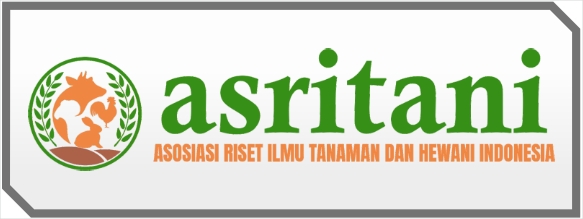A Nutrient Analysis Of Various Taro Varieties in The Sangihe Islands Region
DOI:
https://doi.org/10.59581/jtpip-widyakarya.v1i4.2222Keywords:
Taro Varieties, Nutritional Composition, Food ProcessingAbstract
The Sangihe-Talaud region hosts several taro varieties whose nutritional compositions in raw, steamed, and fried states remain unknown. This study examined these varieties, their processing methods, and their impact on taro’s nutritional components, encompassing energy, protein, fat, carbohydrates, dietary fiber, ash, calcium, phosphorus, iron, vitamin C, moisture content, and sensory preferences. The investigation encompassed Macape Marramu, Macape Darrana, and Allae Mawira taro types subjected to raw, steamed, and fried treatments. In this study, the researchers employed a complete randomized design with two factors and four replications. The findings revealed diverse effects of treatments and their interactions on taro’s nutritional profile. Treatment A₁B₂ yielded the highest energy content at 116.6. The maximum protein content was observed in treatment A₂B₂. Treatment A₃B₂ exhibited the highest fat content at 6.87, whereas A₁B₁, while not significantly different from A₂B₁ and A₃B₁, showed lower fat content. Treatment A₂B₂ registered the highest carbohydrate content at 89.27. Treatment A₁B₂ resulted in the highest dietary fiber at 4.28. The lowest ash content was in treatment A₁B₁, while the highest was observed in treatment A₃B₂ at 1.07. Treatment A₃B₂ recorded the highest calcium at 125%. The maximum phosphorus content was noted in treatment A₃B₂, whereas the minimum was in A₂B₀. Treatment A₃B₂ exhibited the highest iron content. The richest vitamin C content emerged in treatment A₂B₂ at 15.79. The lowest moisture content was observed in treatment A₁B₂, which was not significantly different from A₂B₂ (Macape Darrana; fried). Meanwhile, the highest moisture content was observed in treatment A₂B₀.
References
Abast, M. A., Koleangan, H., & Pontoh, J. (2016). Analisis asam lemak dalam minyak kelapa murni menggunakan derivatisasi katalis basa. Jurnal MIPA, 5(1), 29–31. https://doi.org/10.35799/jm.5.1.2016.11408
Arif, A. Bin, Budiyanto, A., Hoerudin, D., Penelitian, B. B., Pengembangan, D., &Pertanian, P. (2013). Nilai Indeks Glikemil Produk Pangan dan Faktor-Faktor yang Memengaruhinya. Jurnal Litbang Pertanian, 32(3), 91-99.
Audsyah, Zulfadli, T., Yusuf, M. 2021. Kajian experimental pengolahan minyak kelapa gading murni (virgin coconut oil) dengan metode pemanasan 60°C, 70°C, dan 80°C. Jurnal Ilmiah Teknik Unida 2(2):53-61.
Bintanah, S., Hagnyonowati, dan Jauharany, F. F. 2021. Analisa Zat Gizi dan Tingkat Kesukaan Pada Tepung Talas Bening ( xanthosoma undipes koch ) Sebagai Pangan Fungsional Untuk Menurunkan Kadar Gula Darah efek metabolik yaitu mengurangi episode hipoglikemia. Prosiding Seminar Nasional UNIMUS, 4, 1689– 1697.
Dewi, A. R. R., Hubeis, M., & Cahyadi, E. R. (2019). Strategi Peningkatan Mutu dan Keamanan Pangan Olahan Pertanian Melalui Penerapan Good Manufacturing Practices pada UMKM Berdaya Saing di Kota Bandung. MANAJEMEN IKM: Jurnal Manajemen Pengembangan Industri Kecil Menengah, 14(2), 127-133.
Habibah, N., & Astika, I. W. (2020). Analisis Sistem Budi Daya Tanaman Talas (Colocasia esculenta L.) di Kelurahan Bubulak, Bogor Barat, Jawa Barat. Jurnal Pusat Inovasi Masyarakat, 2(5), 771–781.
Muis. A. 2007. Aktivitas Antioksidan dan antifotooksidan Komponen Minor Virgin Coconut Oil. Tesis Program Pasca Sarjana Universitas Samratulangi. Manado.
-------------- 2014. Pengembangan Ekstrak Minor Virgin Coconut Oil sebagai Pangan Fungsionall. Komunikasi Baristand Industri Manado.
-------------- 2017, Ekstraksi senyawa fenolik minyak paring kelapa hasil samping pengolahan tepung kelapa di PT. Dimembe Nyiur Agripro (DNA), Baristand Manado (Laporan Penelitian)
Pulung, M. L., Yogaswara, R., & Sianipa, F. R. D. . (2016). Potensi antioksidan dan antibakteri virgin coconut oil dari tanaman kelapa asal Papua. Chemistry Progress, 9(2), 63–69. https://doi.org/10.35799/cp.9.2.2016.27992
Sugiyono. 2017. Metode Penelitian Kuantitatif, Kualitatif, dan R&D. Bandung. CV. Alfabeta.
Downloads
Published
How to Cite
Issue
Section
License
Copyright (c) 2023 Herdianto Lantemona, Ronald Yusak Boka

This work is licensed under a Creative Commons Attribution-ShareAlike 4.0 International License.














